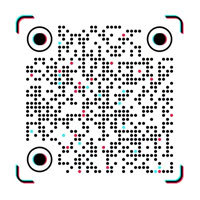How to use self-drilling screws?
Release time:
27 Mar,2025
Once we have set aside the matter of making the correct choice, the second and equally important aspect of how to use self-drilling screws is the installation.

Once we have set aside the matter of making the correct choice, the second and equally important aspect of how to use self-drilling screws is the installation. The importance being that it correlates with the longevity of not only the self-drilling screws in itself, but the structural integrity of the joined material, and lifespan of the structure as a whole.
Basic guidelines on how to use self-drilling screws are:
1. Following the instructions on the packaging or from your dealer/distributor. When in doubt, stop what you’re doing, go through the instructions or talk to the dealer again.
2. Check the maximum drilling capacity of the screws. If the thickness of the metal substrate exceeds the maximum capacity, you should choose a longer screw.
3. Check if the corrosion resistant level is suited for your environment. For example, if you bought a simple, yellow zinc plated screw and expect it to last in coastal areas, think again.
4. Check the maximum recommended RPM (Rounds Per Minute) allowed during drill & drive. Exceeding the maximum RPM recommended by manufacturers during drill & drive is a recipe for disaster, as it will most definitely result in tip burnout and failure. Always err on the safe end and use a hand-tool with a torque limiter.
5. Do not over-drive screws. Over-driven screws have a tendency to crush the EPDM washers or rubber gaskets intended to create a tight weather seal over the hole between the screw head and affixed metal substrate.
6. Do not under-drive screws. Aside from not being able to fasten substrates tightly together, under-driven screws fail to provide sufficient pressure over the hole between the screw head and affixed metal substrate to create a weather-tight seal.
7. Always check the perpendicularity of the screws in relation to the drilled substrate during the drill and drive process. There is little to no chance of correcting a crooked driven screw, and normally a new hole has to be driven somewhere alongside the failed one. Washers on the skewed screw may also damage the substrate itself if it happens to be of a softer material such as plastic.
Keyword:
Related News
What Is The Difference Between Lock Nut And Locknut
The main feature of the lock nut is that it depends on the interaction between the nut and the bolt engagement thread. In short, it uses the friction between the nut and the bolt for self-locking.
27 Mar,2025
Bolts are graded according to the tensile strength and the mechanical stress they support. In terms of numbers, the higher number of grade suggests more strength.
27 Mar,2025
6 Reasons to Use Stainless Steel Fasteners
The top-selling point of the stainless-steel fasteners is that it is a corrosion-resistant material. The presence of 10 percent chromium in the composition of the stainless-steel material renders this trait to the fasteners.
27 Mar,2025
How Do We Need to Choose the Right Fasteners?
There are many kinds of materials used. Different uses determine which material to choose. Different materials are also classified into grades. We can choose different materials according to the use environment and maximum bearing capacity.
27 Mar,2025
How to use self-drilling screws?
Once we have set aside the matter of making the correct choice, the second and equally important aspect of how to use self-drilling screws is the installation.
27 Mar,2025











